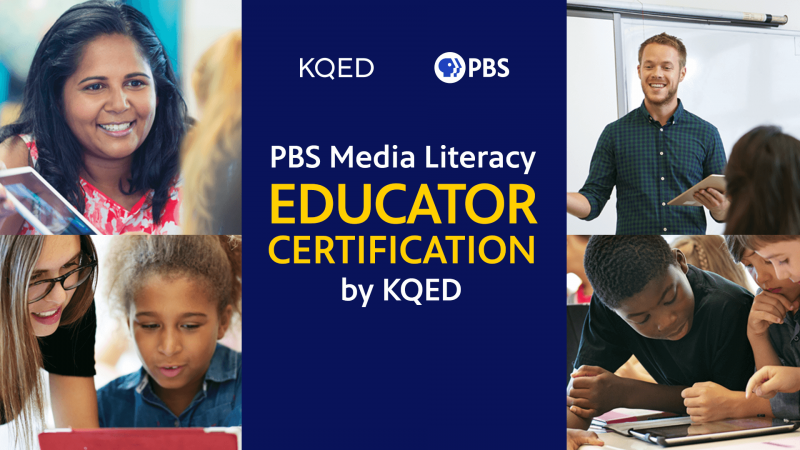Susan Lehman started the process of becoming a PBS Media Literacy Certified Educator last summer. A 20-year veteran English teacher, she initially viewed certification as a way to bring more digital learning tools to her classroom. Instead, the process transformed her teaching in ways she’d never imagined.
“I saw that certification offered a method of instruction that was more far-reaching,” said Lehman, who teaches juniors at Novato High School in the San Francisco Bay Area.
This certification builds upon educators’ existing strengths to reach a new level of practice.
That’s because PBS Media Literacy Certification by KQED was designed to reflect an educator’s current instructional practice and stretch it in new directions. Instead of sitting through a prescribed training series, educators earn a stack of eight micro-credentials by submitting evidence of their own learning and classroom teaching, such as lesson plans, assessment tools, student work samples and instructional media they create. Each micro-credential adds a piece to the total media literacy puzzle, demonstrating that the educator can analyze, evaluate, create or share media and effectively teach students to do the same.
Once educators earn all eight micro-credentials via the Digital Promise platform, they become PBS Media Literacy Certified.
“The process of becoming certified changed the way I taught science and engineering,” said Merek Chang, who teaches chemistry and biology at William Workman High School near Los Angeles. “One of the micro-credentials I earned was “Evaluating Online Information.” The micro-credential helped walk me through the process of teaching students how to evaluate resources online.”
